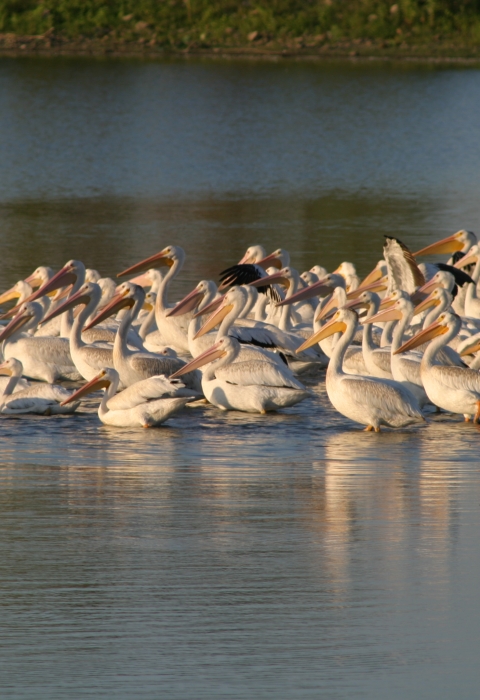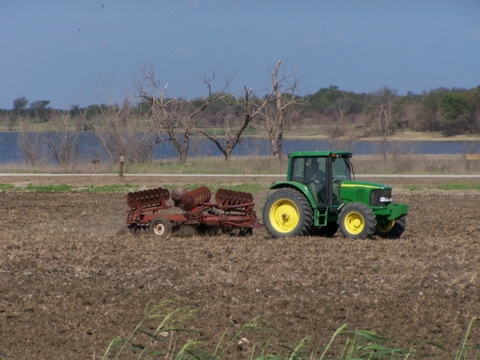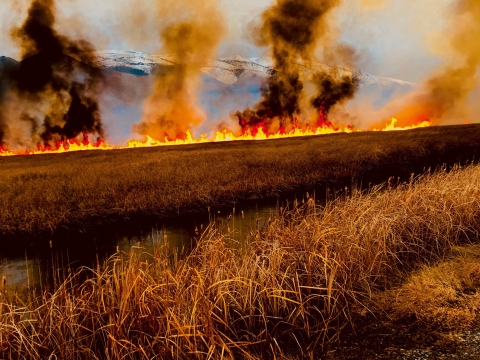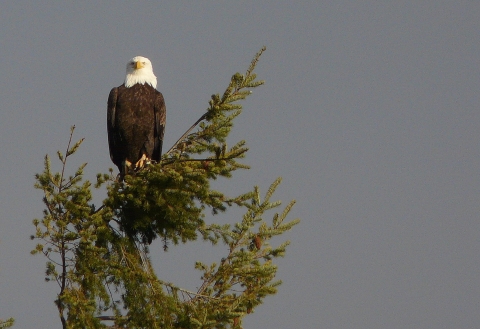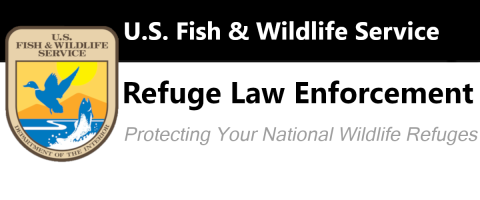What We Do
The National Wildlife Refuge System is a series of lands and waters owned or managed by the U.S. Fish and Wildlife Service. Wildlife conservation is at the heart of the refuge system. It drives everything we do from the purpose for which a refuge is established, to the recreational activities offered there, to the resource management tools we use. Selecting the right tools helps us ensure the survival of local plants and animals and helps fulfill the purpose of the refuge.
Hagerman National Wildlife Refuge staff use various resource management tools to provide habitat needed by migratory birds and native wildlife. Along Wildlife Drive, 200-acres of shallow, impounded marshes known as moist soil units can be flooded to various depths to create ideal habitat during shorebird, wading bird, and waterfowl migration. Vegetation in the marshes is often mowed to encourage seed production at the right time of year. Seeds attract insects and other invertebrates. Many species of birds and wildlife forage in the marshes for the produced seeds and many other marsh inhabitants.
Refuge staff and volunteers manage 300-acres of fields along Wildlife Drive for migratory Snow, Ross’, and White-fronted Geese. The birds arrive by the thousands in fall to find food in the bright green fields of winter wheat. By early spring, the fields are usually barren and nature calls the birds to their northern breeding grounds. Grasses, sedges, and wildflowers cover the fields by March and a variety of insects, including butterflies, and birds use the habitat for feeding and breeding through July. By August, it is time to once again prepare for arriving geese, so the cycle begins again.
Much of what is now refuge lands lies within the Blackland Prairie Ecosystem. The rich, fertile soils of this once expansive landscape supported native grasses and wildflowers including little bluestem, big bluestem, Indiangrass, switchgrass, Indian paintbrush, coneflower, brown-eyed Susan, and the famous Texas bluebonnet. Today, what remains of refuge prairie is managed by using mechanical mowers and prescribed fire to control invasive woody vegetation such as honey locust, winged elm, and eastern red cedar.
Management and Conservation
Refuges use a variety of land management tools based on the best science available. Some refuges use prescribed fires to mimic natural fires that would have cleared old vegetation from the land helping native plants regenerate and local wildlife to thrive. Other refuges contain Wilderness areas where land is largely managed passively. The management tools used are aimed at ensuring a balanced conservation approach where both wildlife and people will benefit. At this field station our conservation toolbox includes water level management in wetlands, prescribed fire, mowing and disking, and controlling invasive species invasive species
An invasive species is any plant or animal that has spread or been introduced into a new area where they are, or could, cause harm to the environment, economy, or human, animal, or plant health. Their unwelcome presence can destroy ecosystems and cost millions of dollars.
Learn more about invasive species .
Our Projects and Research
Wildlife Surveying:
Each year volunteers and staff gather to collect data on various species such as deer, butterflies, and even Bald Eagles! By studying these species we are able to track changes over time. For example, if we counted 30 bald eagles one year and only 7 the next year then we would know a change has occurred that we should look into. Additionally, we work with others to share research to strengthen our data and help contribute to citizen science.
Law Enforcement
U.S. Fish and Wildlife Service federal wildlife officers have a variety of duties and responsibilities. They help visitors understand and obey wildlife and resource protection laws. They work closely with state and local government officials to enforce federal, state and refuge hunting regulations that protect migratory birds and other game species from illegal take, while preserving legal hunting opportunities. Other duties include patrolling refuge roads to watch for speeding vehicles, maintaining relationships with neighboring landowners, identifying trash dump sites, watching for illegal operation of all-terrain vehicles, and participating in public events focused on natural resource management and public safety.
Law enforcement issues or resource damage, including visible oil or brine spills and leaks, should be reported to the refuge headquarters either in person during operational hours, or by phone at 903-786-2826.
Laws and Regulations
Wildlife observation and photography, fishing, hunting with a permit during open seasons, hiking, and picnicking are all allowed and encouraged on the refuge. If you are uncertain if an activity is allowed, please contact the refuge headquarters at 903-786-2826.
